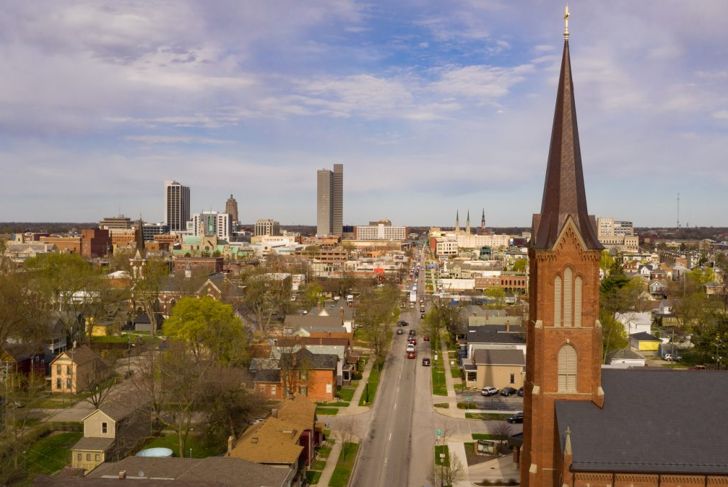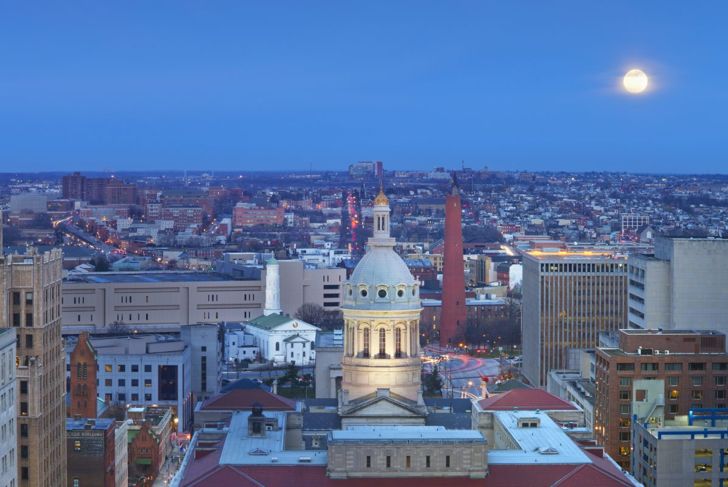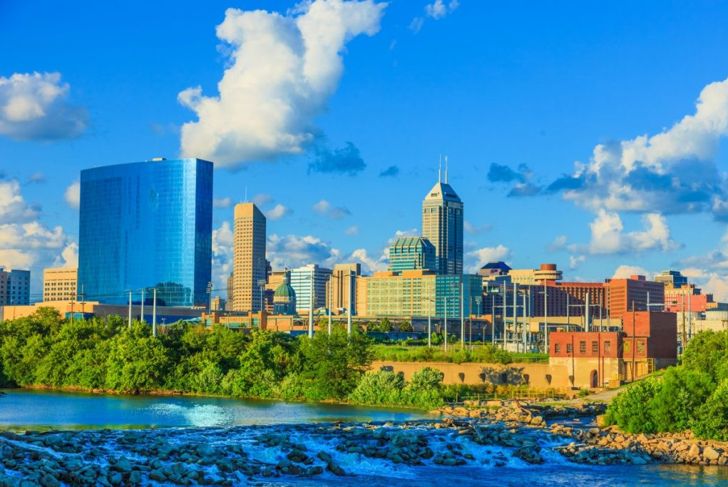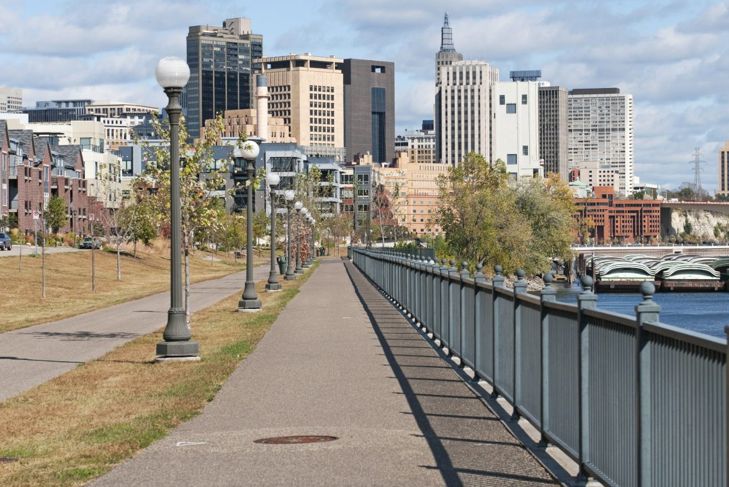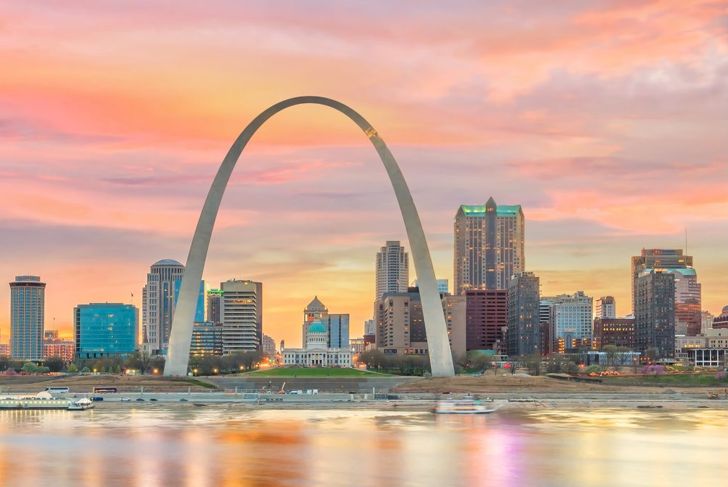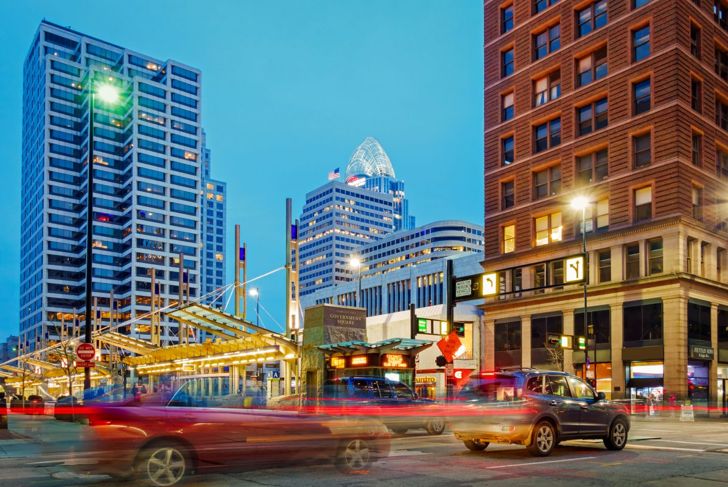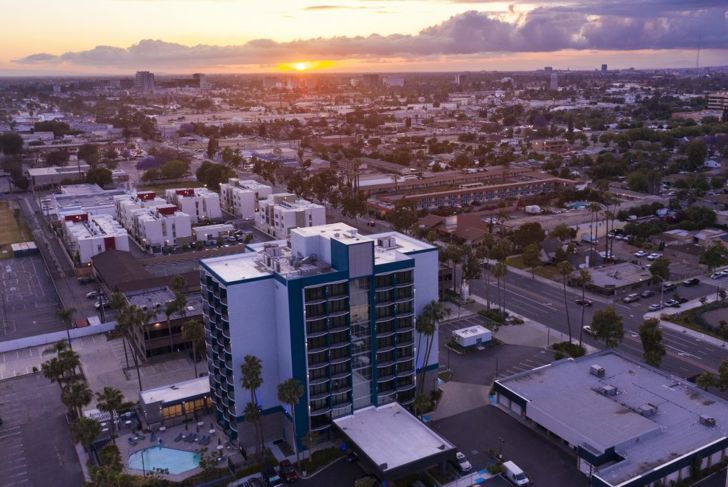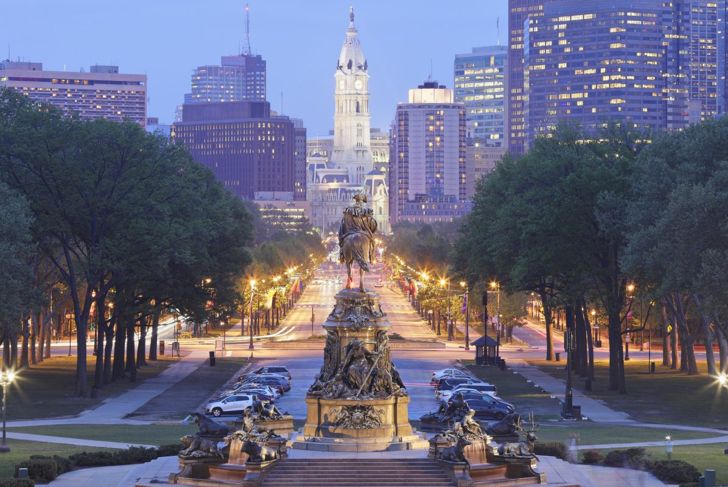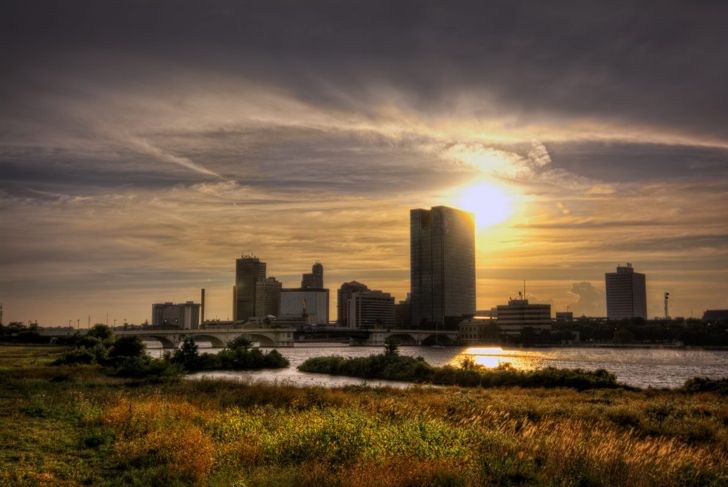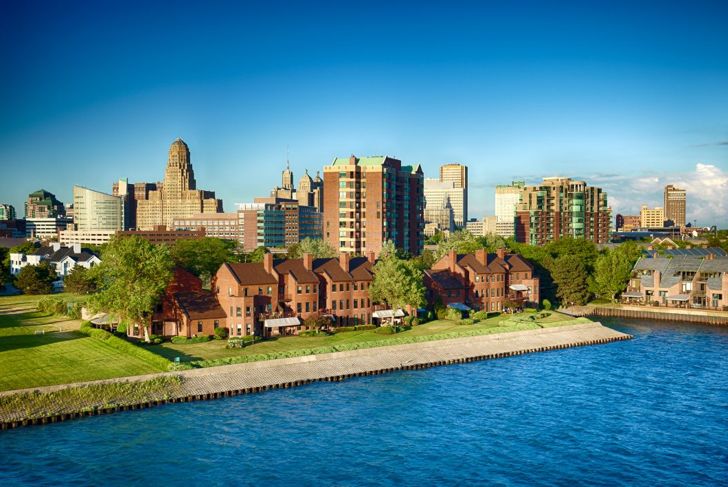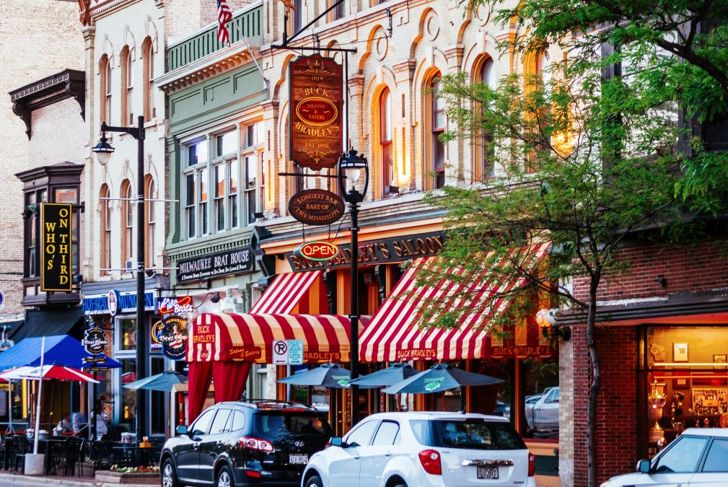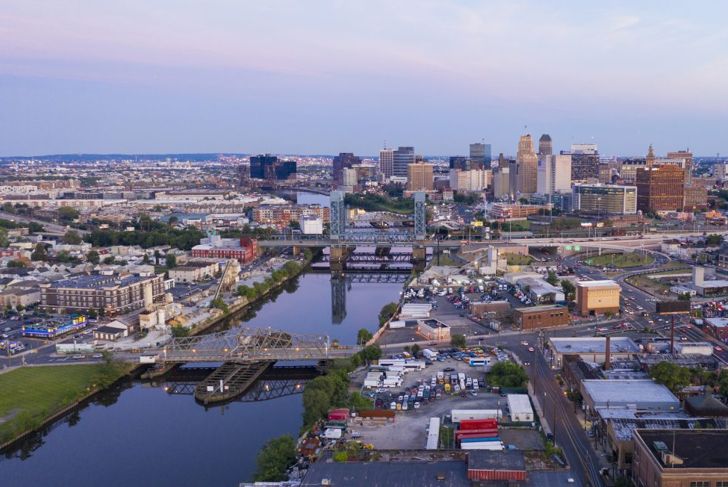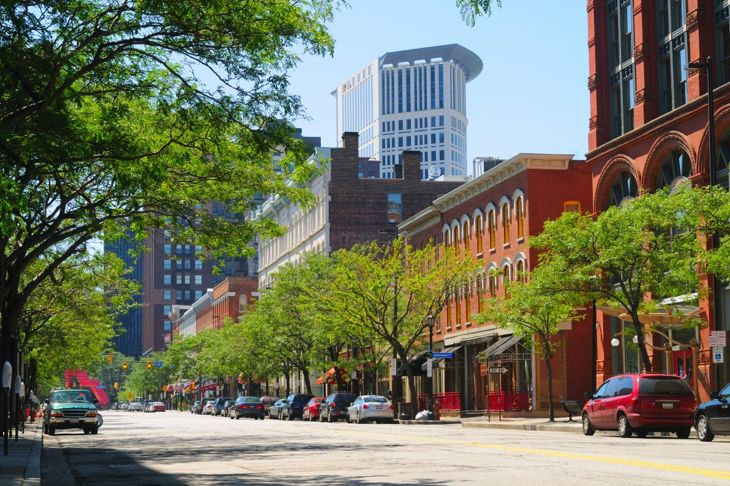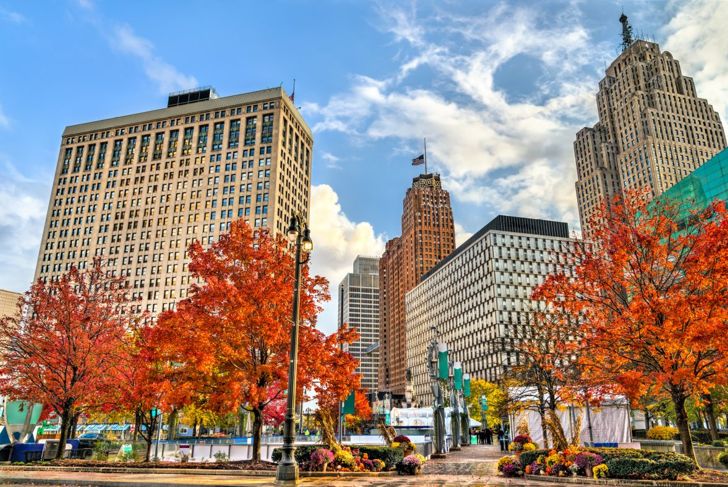Between 2008 and 2017, eight different industries in the U.S. lost over half of their workers. Automation, changing technologies, and outsourcing that started in the 1960s led to a shift in the U.S. from manufacturing to a service-based economy. Since the 1970s, per capita income and household incomes have dropped significantly in many cities as higher-paying jobs dissolve. Suburbs in the country’s larger metropolitan areas are experiencing growths in poverty numbers, accounting for nearly half of the nation’s poor population increases.
Fort Wayne, Indiana
The average income of residents here is $23,607 a year, nearly $5000 lower than the U.S. average. Median household incomes fall just below $44,000 a year, compared to the U.S. average of $53,482. Although there are signs of job growth in some sectors in recent years, there is an above-average number of people living in poverty. Housing eviction rates are high.
- Change in per capita income: $5,309
- Change in median household income: -$15,821
- Change in population: 86,381
- Change in poverty rate: 130.67%
Baltimore, Maryland
Significant crime rates, a poor livability score, and an unemployment rate that is higher than the national average are all signs that life in Baltimore isn’t easy. Its poorer neighborhoods have fewer amenities, including grocery stores, access to healthy foods, housing upgrades, and medical care. New businesses are unwilling to invest in these deteriorating neighborhoods due to high levels of crime and the issues that generally occur in poorer areas of the city.
- Change in per capita income: $8,462
- Change in median household income: -$12,595
- Change in population: -291,059
- Change in poverty rate: 92.92%
Indianapolis, Indiana
The most populous city in the state, and one of the largest economic regions in the country, Indianapolis has a variety of issues when it comes to livability. A handful of tech companies established offices here, leading to an influx of new residents in recent years. Many workers are retraining for jobs in the tech sector, but the factory closures over the last 20 years have caused significant economic losses, along with increased cases of violent crime and homelessness.
- Change in per capita income: $5,294
- Change in median household income: -$15,830
- Change in population: 113,013
- Change in poverty rate: 117.05%
St. Paul, Minnesota
The city saw a major hit in its population numbers when residents started migrating to the suburbs, though numbers are increasing in recent years. Building booms that started in 2013 did not provide enough of an economic boost to offset high state tax rates. Residents are either very wealthy or very poor, with fewer people falling in between. One out of every 163 people in St. Paul is likely to become a victim of a violent crime.
- Change in per capita income: $7,194
- Change in median household income:-$12,785
- Change in population: -7,220
- Change in poverty rate: 197.01%
Chicago, Illinois
Of the city’s three million residents, more than 550,000 of them live in poverty in Chicago. Living in certain neighborhoods not only impacts wealth, health, and life expectancy, but these locations become roadblocks for people who want to change their circumstances and improve their lives. With more people moving out of Chicago than moving to it, its population has dropped significantly. Job insecurity is a driving force for workers leaving the city.
- Change in per capita income: $10,265
- Change in median household income: -$13,671
- Change in population: -648,402
- Change in poverty rate: 109.68%
St. Louis, Missouri
Since 1950, the population in St. Louis has steadily declined. Big businesses like Anheuser-Busch and McDonnell-Douglas were bought out and are no longer mainstays of the local economy here. Civil unrest, segregation, and an older infrastructure with stagnating suburbs all add to the issues facing this city. Around 40% of children in St. Louis are born into poverty.
- Change in per capita income: $7,349
- Change in median household income: -$18,942
- Change in population: -310,963
- Change in poverty rate: 122.02%
Cincinnati, Ohio
Poverty statistics show that nearly one out of every four working-age adults lives in poverty in this city. Median gross rent costs increased by 46% across Greater Cincinnati, yet median incomes only increased by 19%. In 2018, Cincinnati’s poverty rate was the fifth highest in the nation among cities with a population of at least 250,000.
- Change in per capita income: $8,492
- Change in median household income: -$19,472
- Change in population: -152,167
- Change in poverty rate: 156.60%
Santa Ana, California
Although many may view California as a place of infinite sunshine, glitz, and glamour, the reality is that this state accounts for about one-third of the people who receive federal Temporary Assistance for Needy Families (TANF) benefits. In Santa Ana, the median individual incomes of $24,929 fall about $6500 below the federal median. Around 21% of residents live below the poverty line, with some parts of the city experiencing a 39% poverty rate.
- Change in per capita income: -$5,425
- Change in median household income: -$11,538
- Change in population: 176,898
- Change in poverty rate: 172.31%
Philadelphia, Pennsylvania
The City of Brotherly Love has lost a large part of its population in recent years. People say it’s due to a lack of job opportunities in Philadelphia, along with crime issues, cost of living, quality of schools, and the type, size, and cost of available housing here. Additionally, Philadelphia’s slow economic growth led to its inability to attract businesses that will provide a liveable wage.
- Change in per capita income: $4,648
- Change in median household income: -$18,071
- Change in population: -373,087
- Change in poverty rate: 149.00%
Toledo, Ohio
This city, like many others across the country, relied on manufacturing jobs. The economy suffered severely once they closed. A 2018 study showed that the poverty rate in Toledo was higher than the county it’s located in, yet has a significantly lower unemployment rate. Around 70% of the jobs here require a high-school diploma or G.E.D. Experts say Toledoans are working, but because they receive such low wages, they’re also struggling with poverty.
- Change in per capita income: $666
- Change in median household income: -$25,688
- Change in population: -105,625
- Change in poverty rate: 178.26%
Buffalo, New York
Rising rent and the lack of affordable housing in Buffalo have also led to a housing crisis and a 46% increase in its homeless population. The city’s median income is $27,400, and around 27% of its residents are poor, twice that of the national rate. Studies show that a resident here would need to make more than $32,400 a year to rent a two-bedroom apartment. Families spend more than 60% of their income on rent alone.
- Change in per capita income: $2,810
- Change in median household income: -$23,847
- Change in population: -205,250
- Change in poverty rate: 232.97%
Milwaukee, Wisconsin
The 18% poverty rate in Milwaukee tops that of the state of Wisconsin, which hovers around 11%. The areas of the city with the highest rates of poverty are also those with high incarceration numbers, under-performing schools, and a lack of good jobs. Although there are better-paying jobs in the city’s outskirts that don’t require college degrees, there are major obstacles for job seekers. Transportation, affordable childcare, criminal records, and being unable to afford to move closer to the new job opportunities are all issues for the city’s lower-income population.
- Change in per capita income: $129
- Change in median household income: -$26,016
- Change in population: -120,213
- Change in poverty rate: 236.71%
Newark, New Jersey
According to the U.S. Census Bureau, the median household income between 2015 and 2019 in Newark was $35,199. Just over 27% of the city’s residents live in poverty, which translates to 73,800 people. The majority of people living in poverty here are children under the age of 11 and women between the ages of 25 and 44 years of age. Around 78% of the city’s population are renters. The cost to rent a place to live in Newark has increased by about 20%, yet median income is 10% less than it was ten years ago.
- Change in per capita income: -$6,229
- Change in median household income: -$33,346
- Change in population: -101,954
- Change in poverty rate: 207.69%
Cleveland, Ohio
Data from the U.S. Census Bureau shows that Cleveland had the highest poverty rate in the country in 2019, beating out Detroit. Of the total number of 114,000 people living in poverty, 6,500 of the adults were also working a full-time job for the previous year and 37,7000, or 46%, were children. Ohio is the only state with more than one city with populations over 300,000 that have the highest number of its residents living in poverty.
- Change in per capita income: -$3,396
- Change in median household income: -$37,290
- Change in population: -363,505
- Change in poverty rate: 284.44%
Detroit, Michigan
Job losses in professional and business services, trade, and transportation areas, education and health services, and manufacturing sectors have hit Detroit hard. Workers had higher incomes in 2017 than they did at the end of 2020. As of December 2020, 30.6% of the city’s residents were living below the poverty line. Detroit reached its population height in 1950. By 2010, it had decreased by 60%. Currently, with a population of around 670,000, Detroit is down another 7% from 2010 numbers.
- Change in per capita income: -$6,393
- Change in median household income: -$42,100
- Change in population: -834,327
- Change in poverty rate: 328.24%

 Home
Home Health
Health Diet & Nutrition
Diet & Nutrition Living Well
Living Well More
More